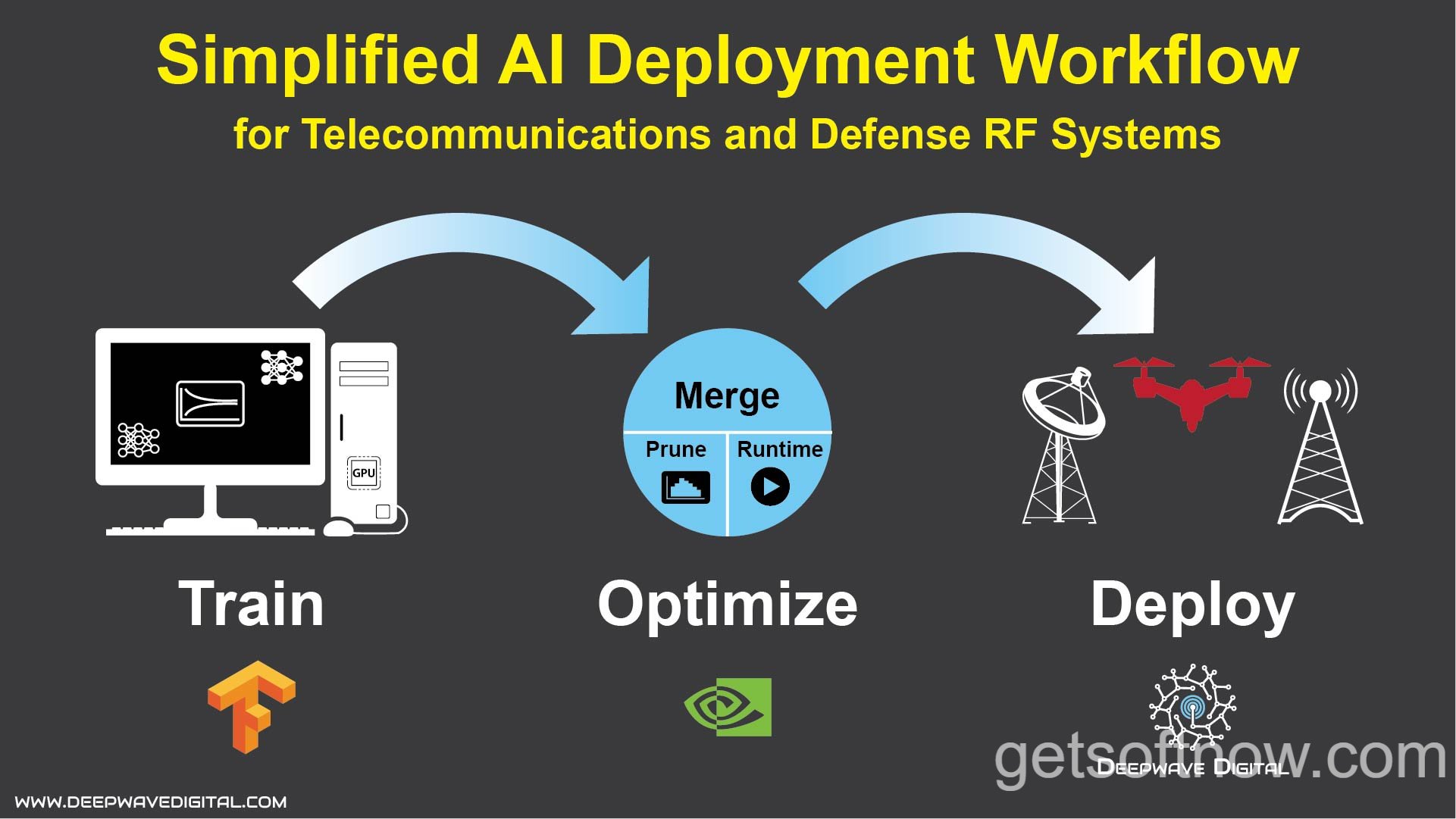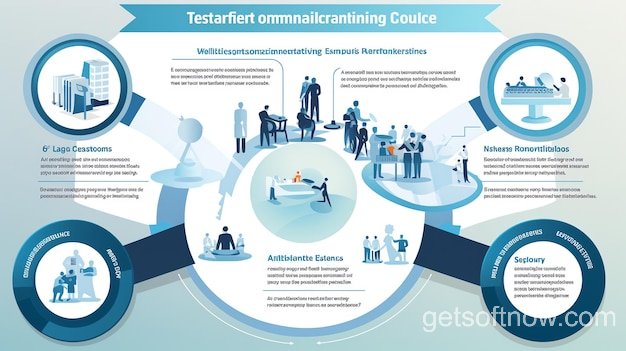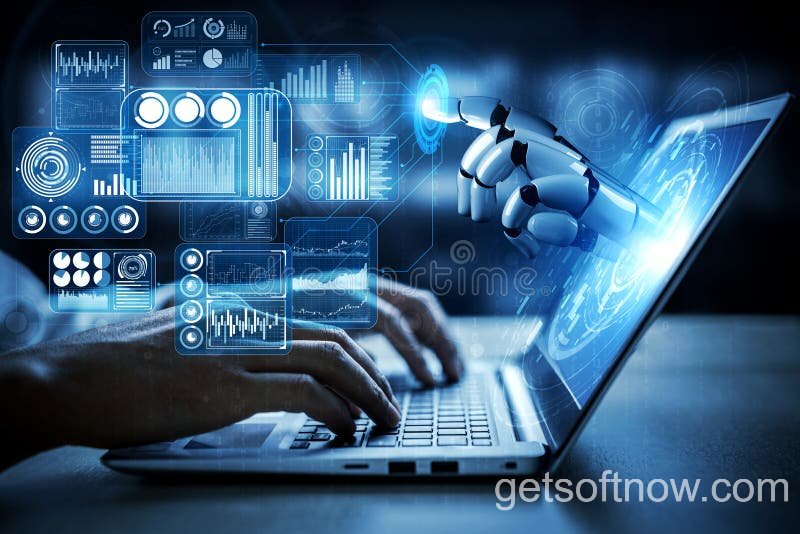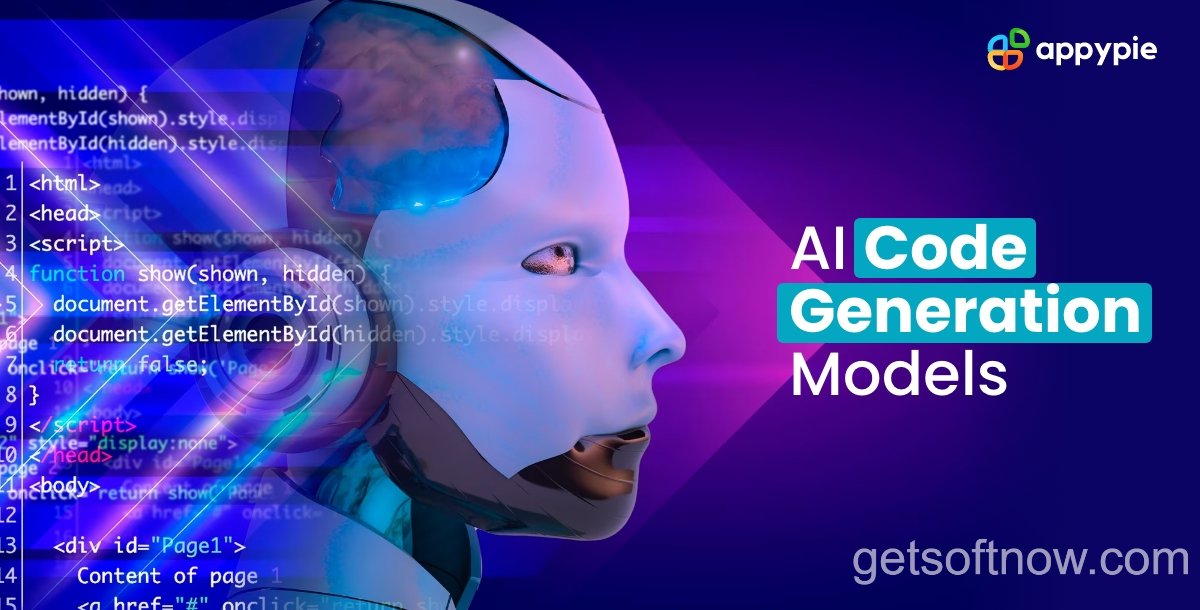How to Create AI Software: A Beginner’s Guide
In today’s data-driven world, artificial intelligence (AI) is rapidly transforming industries and reshaping the way we live and work. From voice assistants and self-driving cars to personalized recommendations and fraud detection, AI software is at the forefront of technological innovation. However, the process of creating AI software can seem daunting, especially for beginners. In this comprehensive guide, we’ll demystify the process and provide you with a step-by-step roadmap to building your own AI software from scratch.
Understanding AI and Machine Learning
Before we dive into the nitty-gritty of creating AI software, it’s essential to understand the fundamental concepts of AI and machine learning. Artificial intelligence refers to the simulation of human intelligence processes by machines, particularly computer systems. It encompasses a broad range of technologies, including machine learning, which is a subset of AI that focuses on the development of algorithms and statistical models that enable systems to improve automatically through experience and data.
There are different types of AI, ranging from narrow AI, which is designed to perform specific tasks (like voice recognition or image classification), to general AI, which aims to replicate human-level intelligence across a wide range of domains. While general AI remains a distant goal, narrow AI has already found countless applications in various industries, such as healthcare, finance, marketing, and entertainment.
Prerequisites for Building AI Software
Before embarking on your AI software journey, it’s crucial to have a solid foundation in several key areas. First and foremost, you’ll need proficiency in at least one programming language commonly used for AI development, such as Python, R, or Java. These languages offer robust libraries and frameworks specifically designed for machine learning and data manipulation tasks.
Additionally, you’ll need strong data processing and analysis skills. AI software heavily relies on data, so the ability to collect, clean, and preprocess data is essential. You should be comfortable working with structured data (e.g., databases, spreadsheets) as well as unstructured data (e.g., text, images, audio, video).
Finally, you’ll need a solid understanding of relevant algorithms and models used in AI development. While you don’t need to be a math whiz, familiarity with concepts like linear algebra, calculus, and probability theory will go a long way in helping you grasp the underlying principles of machine learning models.
Step 1: Define Your Problem and Gather Data
The first step in creating AI software is to clearly define the problem you want to solve. This may seem obvious, but it’s a crucial step that will guide the rest of your development process. Are you trying to build a predictive model for stock market forecasting? Or perhaps you want to develop a computer vision system for object detection and recognition? Clearly articulating your problem will help you identify the appropriate data sources and modeling techniques.
“The better you define the problem, the better the chance you have of solving it.” – Steve Blank
Once you’ve defined your problem, it’s time to gather the relevant data. Data is the fuel that powers AI systems, so the quality and quantity of your data will significantly impact the performance of your model. Depending on your problem, you may need to collect data from various sources, such as databases, APIs, web scraping, or even manual data entry.
It’s essential to ensure that your data is clean, consistent, and free of errors or missing values. This process, known as data cleaning and preprocessing, can be time-consuming but is crucial for producing accurate and reliable models.
Types of Data for AI Software
AI software can leverage a wide range of data types, including:
- Structured data: This includes data stored in organized formats like databases and spreadsheets, with clearly defined fields and relationships.
- Unstructured data: This encompasses data that lacks a predefined structure, such as text (e.g., social media posts, articles), images, audio, and video.
- Time-series data: This type of data is collected over time and is often used for forecasting and trend analysis (e.g., stock prices, sensor readings).
The quality and quantity of your data play a crucial role in the success of your AI software. Generally, the more high-quality data you have, the better your model will perform. However, it’s also important to consider the trade-offs between data quality and availability, as well as the potential for overfitting or underfitting your model.
Step 2: Choose the Right AI Model and Algorithm
Once you have a clear problem statement and a solid understanding of your data, the next step is to select the appropriate AI model and algorithm for your task. There are numerous AI models and techniques to choose from, each with its own strengths, weaknesses, and use cases.
Some of the most popular AI models include:
- Neural networks: These are a class of models inspired by the human brain, consisting of interconnected nodes that process and transmit information. Neural networks are widely used for tasks like image recognition, natural language processing, and time-series forecasting.
- Decision trees: These are tree-like models that make decisions based on a series of hierarchical rules or conditions. Decision trees are commonly used for classification and regression tasks, as well as interpretability and feature importance analysis.
- Support vector machines (SVMs): SVMs are a type of supervised learning model that excels at classification and regression tasks by finding the optimal hyperplane that separates different classes or categories.
- Ensemble methods: These techniques combine multiple models (e.g., random forests, gradient boosting) to improve predictive performance and reduce overfitting.
The choice of model and algorithm will depend on several factors, including the nature of your problem (e.g., classification, regression, clustering), the characteristics of your data (e.g., linearity, dimensionality), and the trade-offs between model complexity, interpretability, and performance.
It’s also important to consider the complexity of your model and the potential for overfitting or underfitting. Overly complex models may perform well on the training data but fail to generalize to new, unseen data (overfitting), while oversimplified models may underfit the data and miss important patterns or relationships.
Common AI Algorithms and Techniques
Within the realm of AI, there are several common algorithms and techniques that are used in various applications. Some of the most widely used ones include:
- Supervised learning:
- Regression: Used for predicting continuous numerical values (e.g., house prices, stock prices).
- Classification: Used for assigning discrete class labels or categories (e.g., spam detection, sentiment analysis).
- Unsupervised learning:
- Clustering: Used for grouping similar data points together based on their characteristics (e.g., customer segmentation, anomaly detection).
- Dimensionality reduction: Used for reducing the number of features or variables in a dataset while preserving its essential information (e.g., data visualization, feature selection).
- Reinforcement learning: Used for training agents to make sequential decisions and learn from their mistakes through trial and error (e.g., game-playing, robotics).
- Deep learning: A subset of machine learning that uses artificial neural networks with multiple layers to learn hierarchical representations from data (e.g., image recognition, natural language processing).
The choice of algorithm or technique will depend on the specific problem you’re trying to solve, the type of data you have, and the desired outcome (e.g., prediction, classification, clustering).

Selecting the right AI model and algorithm is a critical step in the development process, as it will significantly impact the performance and accuracy of your AI software. It’s often a good idea to experiment with multiple models and techniques, evaluate their performance, and choose the one that best fits your requirements.
Step 3: Train and Optimize Your AI Model
Once you’ve selected your AI model and algorithm, the next step is to train and optimize it using your prepared data. This process involves splitting your data into training and testing sets, configuring the model’s hyperparameters, and using various training techniques to improve its performance.
One common practice is to split your data into three subsets: a training set (typically 60-80% of the data), a validation set (10-20%), and a test set (10-20%). The training set is used to train the model, the validation set is used for tuning hyperparameters and evaluating the model during training, and the test set is used for a final evaluation of the model’s performance on unseen data.
Hyperparameters are settings or configurations that control the behavior of your AI model during training. Examples include learning rate, regularization parameters, and the number of hidden layers or nodes in a neural network. Tuning these hyperparameters is crucial for optimizing your model’s performance and preventing issues like overfitting or underfitting.
There are various training techniques that can be employed to improve the accuracy and efficiency of your AI model, such as:
- Batch training: The entire training dataset is fed into the model in batches, and the model parameters are updated after each batch.
- Online training: The model is trained on individual data points or small batches as they become available, allowing for continuous learning and adaptation.
- Transfer learning: Instead of training a model from scratch, you use a pre-trained model (e.g., a neural network trained on a large dataset) and fine-tune it for your specific task.
During the training process, it’s essential to monitor and evaluate your model’s performance using appropriate evaluation metrics. These metrics vary depending on your problem type (e.g., classification accuracy, regression error, clustering purity) and can help you identify areas for improvement or potential issues with your model.

Training and optimizing your AI model is an iterative process that may require multiple rounds of tuning and refinement. It’s also important to be mindful of potential biases or limitations in your data or model, and to consider techniques like regularization, data augmentation, or ensemble methods to mitigate these issues.
“The most powerful tool we have for understanding the universe is machine learning.” – Pedro Domingos
By carefully training and optimizing your AI model, you can maximize its performance and accuracy, setting the stage for successful deployment and real-world impact.
Step 4: Deploy and Monitor Your AI Software
After training and optimizing your AI model, the next step is to deploy it as part of a software application or system. This process involves integrating the trained model into a production environment, where it can be accessed and used by end-users or other systems.
Deploying AI software can be done in various ways, depending on your specific requirements and infrastructure. Some common deployment platforms and tools include:
- Cloud-based deployment: Services like Amazon Web Services (AWS), Google Cloud Platform (GCP), and Microsoft Azure offer scalable and flexible solutions for deploying AI models as web services or APIs.
- On-premises deployment: For organizations with strict security or regulatory requirements, deploying AI software on internal servers or edge devices may be necessary.
- Containerization: Tools like Docker and Kubernetes allow for packaging and deploying AI models and their dependencies as lightweight, portable containers.
Regardless of the deployment method you choose, it’s essential to have a well-defined workflow and processes in place for managing and monitoring your AI software. This includes setting up logging and monitoring systems to track the performance of your models, as well as mechanisms for retraining and updating them as new data becomes available or requirements change.

Monitoring the performance of your AI software is crucial for ensuring its reliability and accuracy over time. This may involve tracking key metrics like prediction accuracy, throughput, and latency, as well as implementing alerts or notifications for anomalies or performance degradation.
Additionally, it’s important to have a strategy in place for retraining and updating your AI models. As new data becomes available or patterns in the data change, your models may need to be retrained to maintain their accuracy and relevance. This process should be automated and integrated into your deployment workflow to ensure seamless updates and minimal downtime.
Step 5: Continuously Improve and Maintain Your AI Software
The development and deployment of AI software is not a one-time event; it’s an ongoing process that requires continuous improvement and maintenance. As your software is used in the real world, you’ll inevitably receive feedback, encounter new use cases, and identify areas for improvement or optimization.
Collecting and analyzing feedback from end-users, stakeholders, and other sources is crucial for identifying potential issues or opportunities for enhancement. This feedback can come in various forms, such as user reports, usage metrics, or direct communication with customers or domain experts.
Based on this feedback, you may need to update or augment your existing data sources, retrain your AI models, or even redesign certain components of your software. Continuously monitoring and updating your AI software is essential for maintaining its accuracy, relevance, and performance over time.

Additionally, it’s important to consider ethical considerations and potential biases when developing and maintaining AI software. AI systems can perpetuate or amplify existing biases in data or algorithms, leading to unfair or discriminatory outcomes. Techniques like bias mitigation, fairness-aware algorithms, and diverse data sources can help address these issues and promote more ethical and responsible AI development.
“AI is not a silver bullet, but it’s an incredibly powerful tool that we need to learn how to use responsibly.” – Dario Amodei, Research Scientist at OpenAI
By embracing a mindset of continuous improvement and maintenance, you can ensure that your AI software remains effective, reliable, and aligned with evolving requirements and best practices.
Real-World Examples and Case Studies
To better illustrate the applications and impact of AI software, let’s explore a few real-world examples and case studies across various industries:
- Healthcare: AI-powered medical imaging analysis tools are helping radiologists detect and diagnose diseases like cancer more accurately and efficiently. For example, GE Healthcare’s AI-powered CT scan analysis can identify and prioritize potential abnormalities, reducing the time and effort required for manual review.
- Finance: AI and machine learning are revolutionizing fraud detection and risk management in the financial sector. Companies like Feedzai use advanced AI models to analyze vast amounts of transaction data and identify patterns indicative of fraud or money laundering in real-time.
- Retail and e-commerce: AI-driven recommendation systems are powering personalized shopping experiences and increasing customer engagement and sales. Companies like Amazon and Netflix leverage AI to suggest products or content based on user preferences and behavior.
- Manufacturing: AI is being used in predictive maintenance and quality control applications to optimize industrial processes and reduce downtime. For example, GE’s Predictive Maintenance solutions use AI to analyze sensor data and forecast when equipment is likely to fail, allowing for proactive maintenance and minimizing unplanned outages.

While these examples showcase the potential and impact of AI software, it’s important to note that the development and deployment of AI systems can also present significant challenges. Issues such as data privacy, algorithmic bias, and lack of transparency or interpretability are ongoing concerns that must be addressed through rigorous testing, ethical guidelines, and regulatory frameworks.
Future Trends and Developments in AI Software
As AI technology continues to evolve and advance, we can expect to see several exciting trends and developments in the field of AI software:
- Explainable AI (XAI): There is a growing emphasis on developing AI systems that can explain their decision-making processes in a transparent and interpretable manner. XAI techniques aim to address the “black box” nature of many AI models, improving trust, accountability, and adoption in high-stakes applications.
- Federated learning: This approach enables collaborative training of AI models across decentralized data sources, without the need to share or centralize sensitive data. Federated learning has significant implications for privacy-preserving AI applications, particularly in sectors like healthcare and finance.
- Multimodal AI: AI systems are becoming increasingly adept at processing and integrating multiple modalities of data, such as text, images, audio, and video. This opens up new possibilities for more natural and seamless human-computer interaction, as well as applications in areas like multimedia content analysis and generation.
- AI-powered hardware acceleration: Specialized hardware and chipsets optimized for AI workloads, such as GPUs, TPUs, and neuromorphic chips, are enabling faster and more efficient training and inference of AI models. This trend is driving innovations in edge computing, embedded AI, and real-time applications.
- AI-human collaboration: Rather than viewing AI as a replacement for human intelligence, there is a growing focus on developing AI systems that can augment and collaborate with humans in decision-making processes. This human-in-the-loop approach aims to leverage the complementary strengths of AI and human intelligence for better outcomes.

As these trends continue to unfold, they will undoubtedly shape the landscape of AI software development and deployment, ushering in new applications, use cases, and paradigms. It will be an exciting journey, one that will require a collaborative effort between researchers, developers, policymakers, and end-users to realize the full potential of AI while mitigating its risks and challenges.
Conclusion
Creating AI software is a multifaceted and iterative process that requires a solid understanding of the underlying concepts, techniques, and best practices. From defining the problem and gathering data to selecting the appropriate model and algorithms, training and optimizing the model, and deploying and maintaining the software, each step is crucial for ensuring the success and impact of your AI solution.
Throughout this comprehensive guide, we’ve explored the key steps and considerations involved in building AI software from scratch. We’ve delved into the fundamental concepts of AI and machine learning, discussed the prerequisites and data requirements, and provided insights into model selection, training, deployment, and continuous improvement.
While the development of AI software presents its own set of challenges, the potential benefits and applications across various industries are vast and transformative. From healthcare and finance to retail and manufacturing, AI is already revolutionizing the way we approach problem-solving, decision-making, and automation.
As we look to the future, it’s clear that AI software will continue to evolve and advance, driven by emerging trends and technologies such as explainable AI, federated learning, multimodal AI, and AI-powered hardware acceleration. However, alongside these exciting developments, it will be imperative to prioritize ethical considerations, transparency, and accountability in AI development and deployment.
“The key to successful AI is not just building intelligent systems, but building trustworthy intelligent systems.” – Yoshua Bengio, Pioneer in Artificial Intelligence
Ultimately, the journey of creating AI software is one of continuous learning, adaptation, and innovation. By staying up-to-date with the latest developments, embracing best practices, and fostering collaborations between researchers, developers, and end-users, we can unlock the full potential of AI while navigating its challenges responsibly and ethically.
At Get Soft Now, we’re committed to providing insightful and informative content that empowers our readers to harness the power of software and technology, including the rapidly evolving field of AI. We hope this comprehensive guide has equipped you with the knowledge and resources to embark on your own AI software development journey, and we look forward to sharing more updates and insights as the field continues to progress.
Frequently Asked Questions
1. Do I need to be an expert in math and statistics to create AI software?
While a strong foundation in math and statistics can be beneficial, it’s not an absolute requirement. Many modern AI frameworks and libraries abstract away much of the complex mathematical operations, allowing developers to focus on building and training models without delving too deeply into the underlying theory. However, a basic understanding of concepts like linear algebra, calculus, and probability can help you better grasp how AI models work and make more informed decisions during the development process.
2. How much data do I need to train an AI model effectively?
The amount of data required for training an AI model effectively can vary widely depending on the complexity of the problem, the type of model, and the desired level of accuracy. In general, more data tends to result in better model performance, but there is no universal rule. Some models may perform well with relatively small datasets, while others may require large amounts of diverse data to achieve acceptable results. It’s important to carefully evaluate your data requirements based on your specific use case and model choice.
3. How can I ensure the ethical and responsible development of AI software?
Ethical and responsible AI development is a crucial consideration in today’s landscape. Some best practices include:
- Implementing bias mitigation techniques to ensure fair and non-discriminatory outcomes
- Prioritizing transparency and explainability in AI models, especially for high-stakes applications
- Adhering to data privacy and security regulations, and ensuring proper consent and governance around data usage
- Establishing clear guidelines and oversight for the development, deployment, and monitoring of AI systems
- Fostering diversity and interdisciplinary collaboration in AI development teams to incorporate diverse perspectives and ethical considerations
4. What are some common challenges faced when deploying and maintaining AI software?
Some common challenges in deploying and maintaining AI software include:
- Ensuring model performance remains consistent and accurate over time as data distributions or patterns change
- Scaling AI systems to handle increasing workloads and data volumes efficiently
- Integrating AI components with existing software systems and infrastructure
- Monitoring and troubleshooting AI systems, which can be opaque and difficult to interpret
- Addressing potential security vulnerabilities or adversarial attacks on AI systems
- Keeping up with rapid advancements in AI techniques and technologies
Addressing these challenges often requires robust DevOps practices, continuous monitoring and retraining, and close collaboration between AI developers, data scientists, and IT teams.
We hope this comprehensive article has provided you with valuable insights and a solid foundation for creating AI software that delivers impactful and responsible solutions. As always, feel free to reach out to us at Get Soft Now with any questions or feedback – we’re here to support you on your AI journey.

Leave a Reply